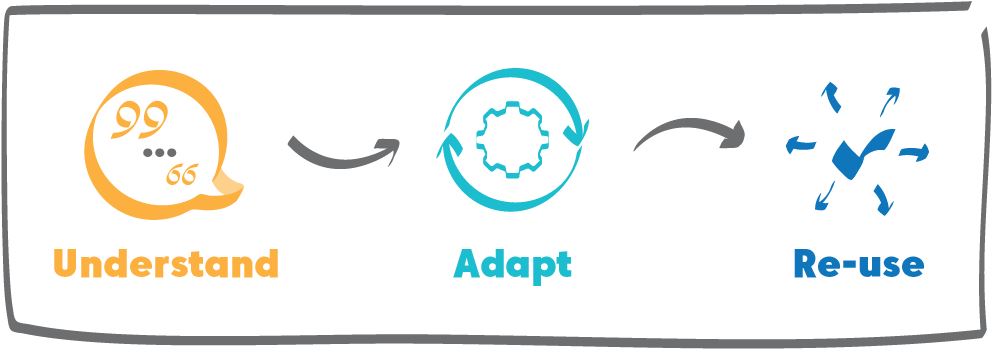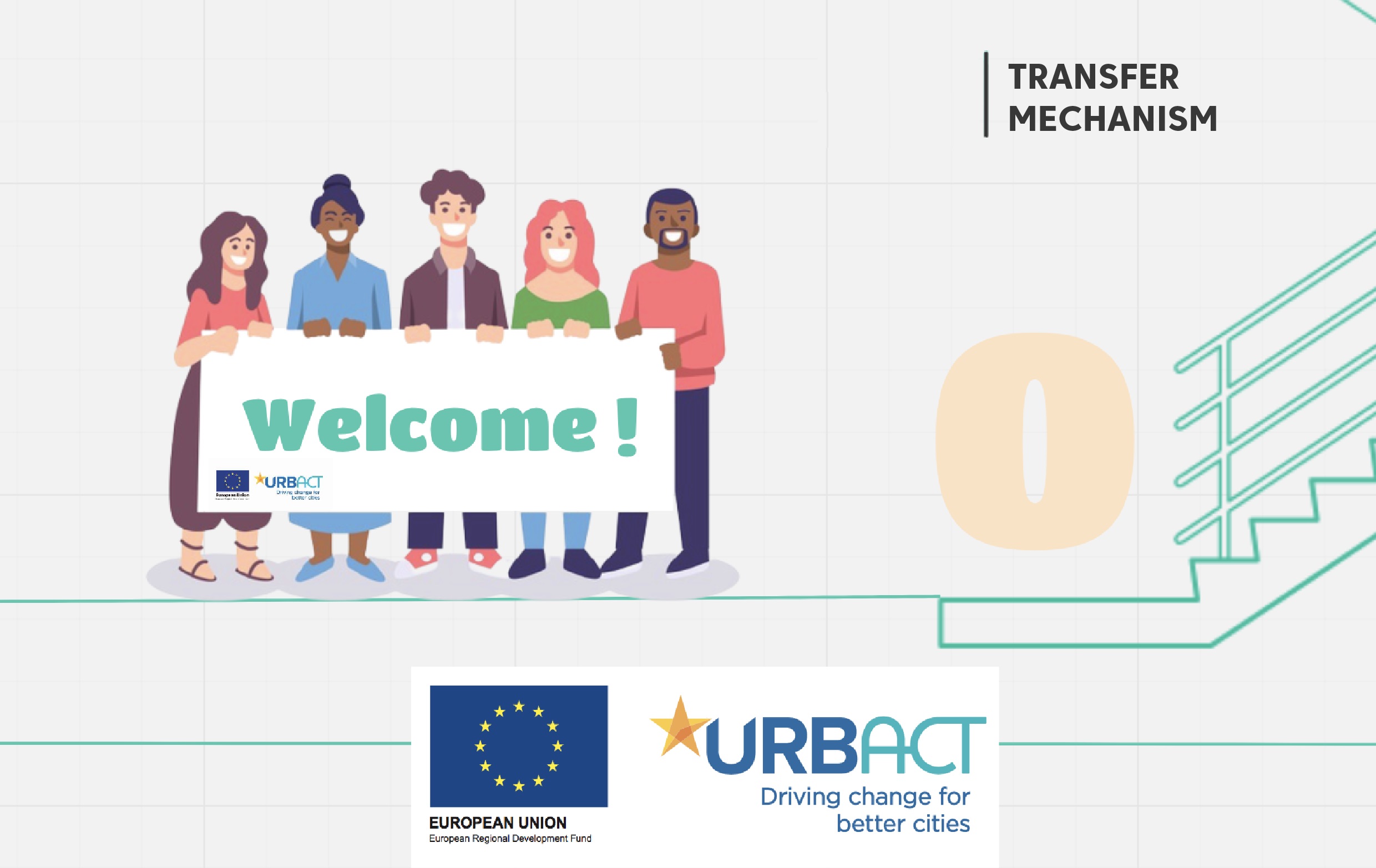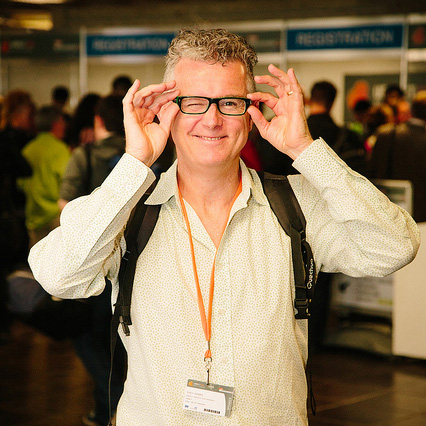What have we learned about transferring urban good practice?
Edited on
03 September 2021URBACT Expert Eddy Adams talks us through the experience and lessons of the first generation of URBACT Transfer Networks.

It’s exam season as I write this. Across Europe, students are preparing to be tested, in a process that will illuminate what they know and what they don’t. I have been thinking about the URBACT Transfer Networks – which designed and tested ways to transfer effective urban solutions – in these terms. As I think back to the start, I realise that we had also been set an exam question:
“Given that Europe’s cities face similar challenges, how can we help them transfer good practices more effectively? What can we do to replicate, scale and mainstream some of the great ideas that have emerged in our cities over recent years?”
Since then, I’ve been at the heart of this process, helping to shape the approach, working with our city partners and, with them, learning a lot along the way. Let me share with you what we’ve learned, what URBACT is doing next to build on this learning, and where this all fits in the broader context of the EU’s evolving urban policy plans and priorities.
How did things look back in 2018?
As we set off on this adventure, there were some important things we knew already. One was that Transnational Networks are effective ways to build cities’ capacity. By providing a structured space for peer learning – underpinned with a clearly defined URBACT method, and a well-developed set of tools – URBACT had already established its strong reputation for enabling participative integrated approaches. We also knew that the combination of a Lead Partner city, alongside a Lead Expert, usually works well.
We’d learned all of this from the Action Planning Networks (APNs) that had been URBACT’s evolving core business since 2002. But the Transfer Networks (TNs) were another proposition. For the first time, partners entered with one city already holding a tested solution. We had several questions we hoped to find answers to.
A key question was how these good practices could and would be transformed in other local contexts. But just as importantly, we weren’t sure how this new process would affect the network chemistry. We didn’t even know if cities with good practices would step forward and commit to three years giving their knowledge away. Finally, we wondered whether this new type of network was going to require new support tools.
As the first wave wrap up their work, we have answers to these key questions. And, not surprisingly, along the way we discovered additional things that hadn’t occurred to us – things we didn’t even know we didn’t know! And I don’t just mean the pandemic, which we’ll come onto later. But first…
What have been the results?
Most importantly, we know that the URBACT Transfer Networks have been successful. The 23 networks have involved 161 cities from 25 countries, with 37% of cities new to URBACT. In terms of results, at least 76% of transfer cities are confident that the target good practice will be re-used.

The piloting of the URBACT Transfer Networks started back in 2016 with a call to identify urban good practices.
Let’s look at just two examples of the ways in which these networks are now reaping the rewards of their months of collaboration and looking ahead to their next steps.
At the Making Spend Matter final conference in March 2021, the network explained that all the partners have adapted Preston’s (UK) innovative approach to improving the local impact of public procurement. In addition, the network’s reach has been extended through the production of a toolkit and the delivery of an online strategic procurement course that attracted more than 600 registered participants. If you throw in the network’s influence on the Urban Agenda Partnership on Public Procurement, it’s hard not to be impressed.
In the same week, the Bio-Canteens network hosted a successful event in the European Parliament promoting their campaign to encourage the production of local affordable organic food in cities. Their coming plans include an active role at COP26 and an instrumental place within URBACT’s growing cluster of food-related activities.
What have we learned along the way?
A recent study of the Transfer Networks confirmed several important lessons emerging from this work. A crucial finding was the importance of modularising complex strategic initiatives – breaking them down into their component parts – to make them easier to adapt and replicate. We’ve also seen the value of starting with a forensic third-party analysis of the good practice, to ensure that it is transparent and easier to understand.

The URBACT transfer mantra ‘Understand, Adapt, Re-use’ reflects the core principles underlying the transfer process. This is not a copy-paste exercise.
It’s also clear that Lead Partners have benefitted from sharing their good practice in a number of ways: raising their profile across Europe and identifying improvements based on the scrutiny of their peers. The learning was rarely, if ever, one-way and the collaborative culture of all URBACT networks remained.
As a bonus, we learned some things that we didn’t anticipate. One was that the Lead Expert assumes more of a process and coaching role compared to the traditional URBACT network model. This is because it is the Lead Partner city that is the deep knowledge holder about the content of the practice, rather than the Lead Expert bringing the main thematic expertise.
And, of course, the biggest unknown was Covid! At their mid-point these networks had to make dramatic adjustments to their working methods, as international travel ground to a halt.
With the active support of the URBACT Secretariat, they have embraced a new generation of online tools to maintain their momentum and finish the job. There is no doubt that this has been tough for many, but these lessons have been highly valuable. As we travel less, transnational collaboration will never be the same, and it is perhaps the new digital working methods that they have pioneered that have become the hallmark of these networks.
What about the next steps for the transfer model?
Ahead of the new programming period, URBACT is keen to test new ways to build on the success of this initial wave of transfer networks and has already stated piloting three ways of doing this.
The first of these is quite simple: a second wave of Transfer Networks building on the experiences of the first. Lead Partners from the first wave of networks were able to respond to a call to repeat their experience with a new group of cities. This will allow them to learn the lessons from the first attempt and choose what to do differently. Second time around they should be even more effective!

The second is the new URBACT 'UIA Transfer Mechanism’ for piloting the transfer of successful Urban Innovative Actions (UIA). This new collaborative venture with UIA will explore ways to replicate and scale the lessons learned from these large-scale innovation projects. Transfer cities will develop an investment plan for an adapted version of the UIA practice, whilst the original UIA cities will develop a springboard plan, designed to sustain and scale the original project.
A new challenge for the URBACT UIA Transfer Mechanism (UTM) networks is that the UIA projects are innovation initiatives fresh out of the laboratory and, in some cases, still work in progress. A crucial first step will be to boil them down and explain them in clear terms, whilst assessing their transfer potential and the optimum way to achieve this.
URBACT’s third follow-on transfer initiative is the ‘National Practice Transfer Initiative’ (NPTI), which aims ‘to pass on’ a successfully transferred practice to other towns and cities in the same country. Five pilot networks are led by the National URBACT Points (NUPs) together with a lead city that participated in one of the original Transfer Networks. The first pilots have been approved in Italy, Ireland, Estonia, Slovenia and a joint initiative in Czechia and Slovakia.
How does this fit into the bigger picture?
As we enter a new programming period, EU urban policy is at a crossroads with the proposed European Urban Initiative (EUI) aiming to improve synergies between the various urban programmes and support the take up of effective urban practices within the mainstream Cohesion Policy programmes. URBACT’s transfer initiatives arrive at a particularly pertinent time in providing good examples of how we might do this in practice.
The UTM collaboration between URBACT and UIA can make a valuable contribution since it is likely to strengthen operational links, generate shared learning points and involve the Managing Authorities in the development of urban Investment Plans.
Another important dimension, particularly reflected in the National Practice Transfer Initiatives, is the role of effective national nodal points that can link the city, national and international levels. This new pilot initiative gives new latitude to the NUPs, building their capacity, and in turn helping smaller cities, new to transnational working, to raise their game.
At the same time, all of this is framed within the context of the EU’s five new policy objectives one of which is “Bringing Europe closer to people”. Again, at a crucial point when trust needs to be rebuilt, URBACT provides a clear example of how this EU objective can be achieved. As a crucial part of the URBACT method, every participating city establishes an URBACT Local Group (ULG), assembling a representative group of stakeholders to own and develop the city’s activities within the programme.
The first generation of Transfer Networks engaged school cooks, beekeepers, young entrepreneurs, refugees, teachers and many others in their communities. This bottom-up emphasis remains at the heart of all the new URBACT initiatives and provides a guiding light for planning future urban policy investments.
 Join us at the 2021 URBACT City Festival to find out more!
Join us at the 2021 URBACT City Festival to find out more!
As I write, it is still not too late to register for the URBACT City Festival 15-17 June 2021, a big date in the diary for all of URBACT’s transfer-focused networks. Whilst those who attended the last Festival in Lisbon may be disappointed to hear that this year it’s online, it does provide an opportunity for more people to join the event and gain a better insight into the lessons and experience of the URBACT Transfer Networks.
The programme brings its usual creativity to ensure a dynamic and interactive experience. We invite you to join us.
In the meantime, thanks to all of our heroic network participants and we look forward to seeing your adapted good practices continuing to thrive!
 Submitted by Eddy Adams on
Submitted by Eddy Adams on
